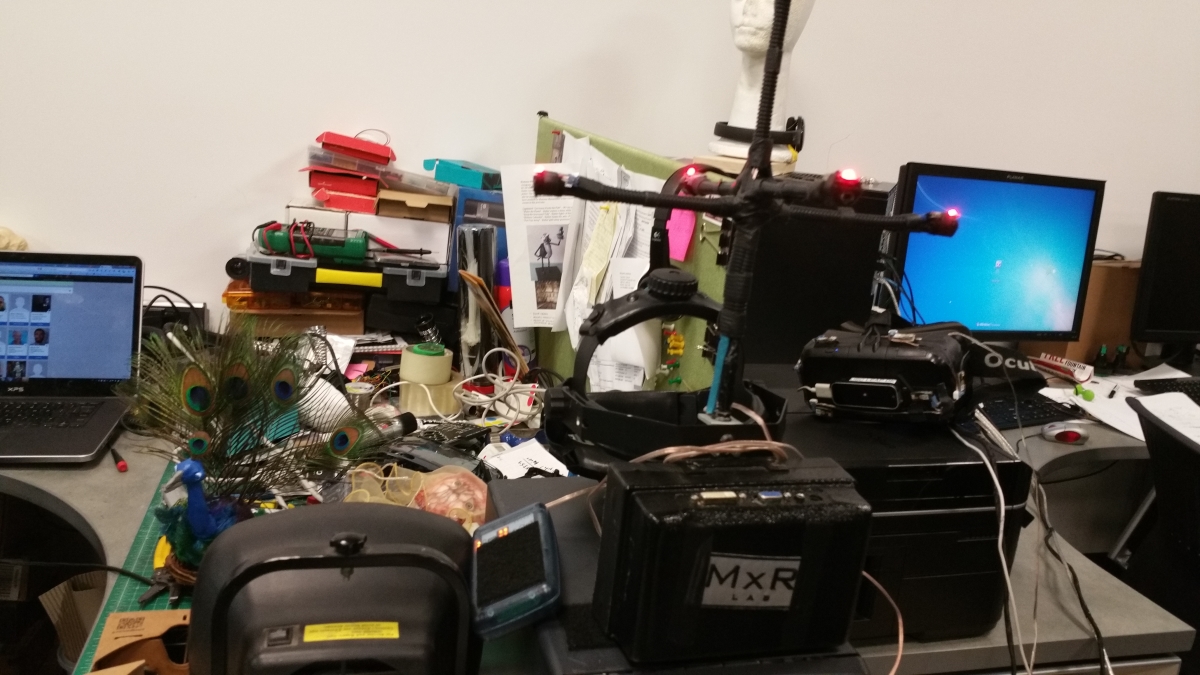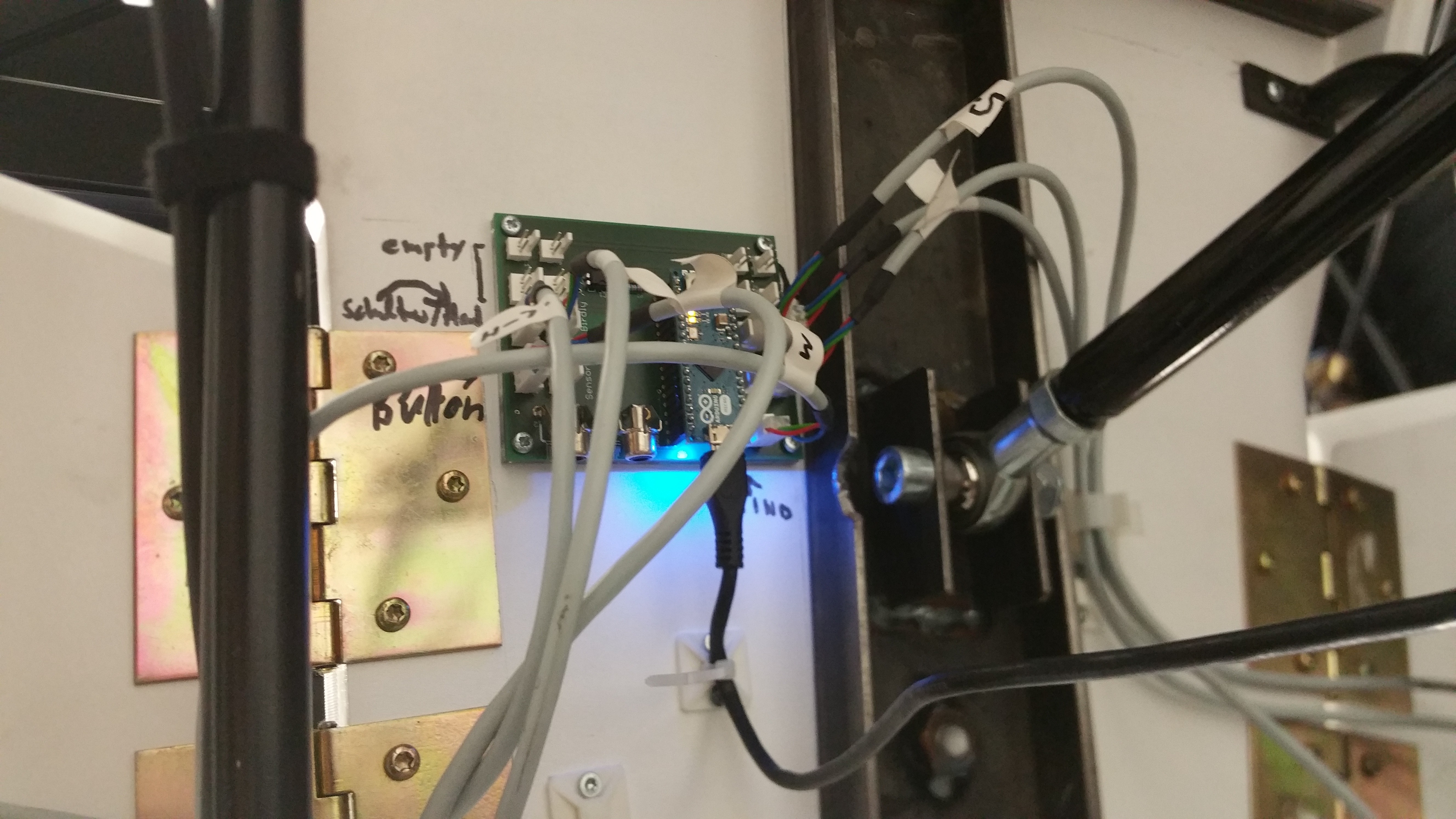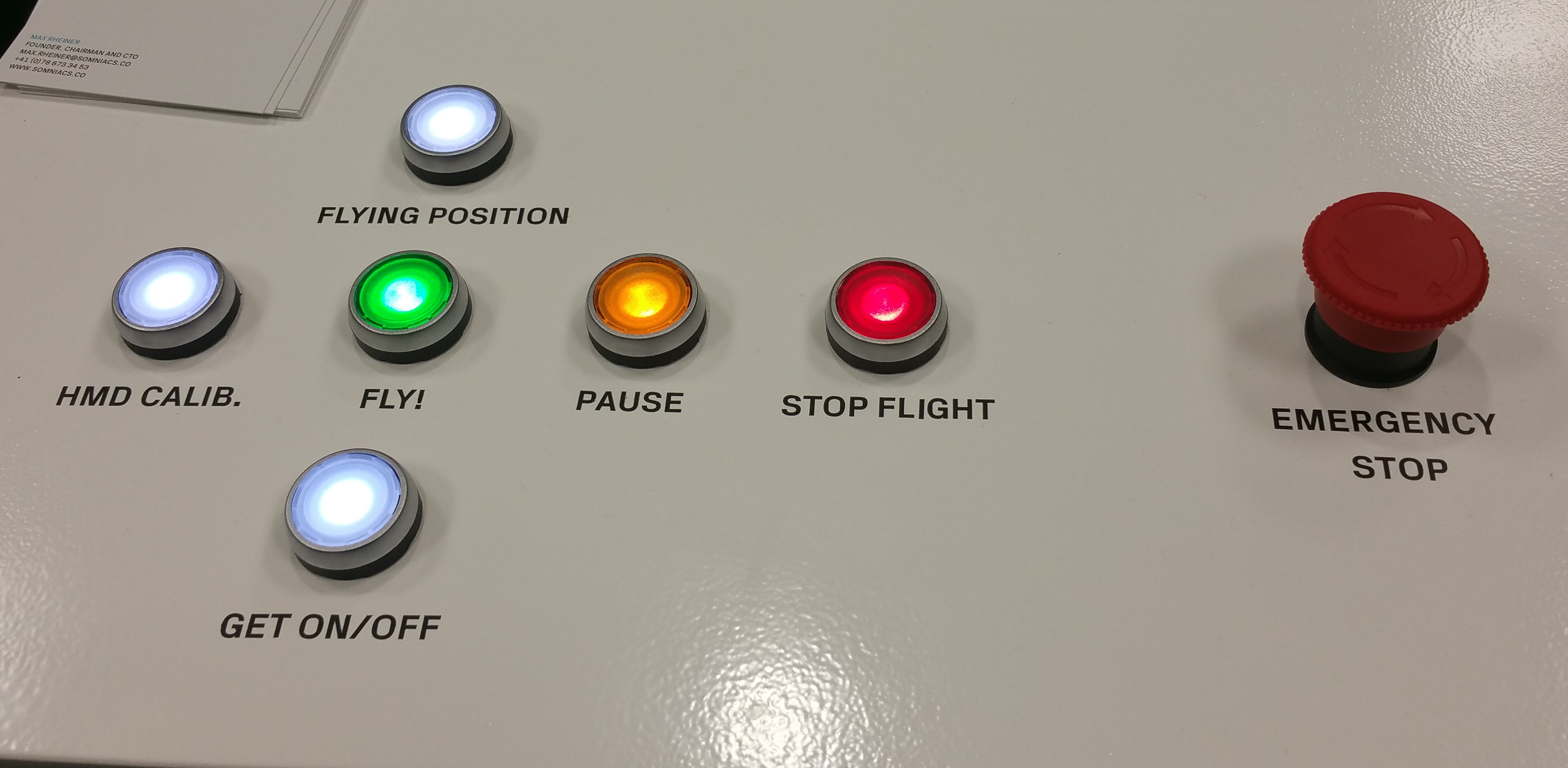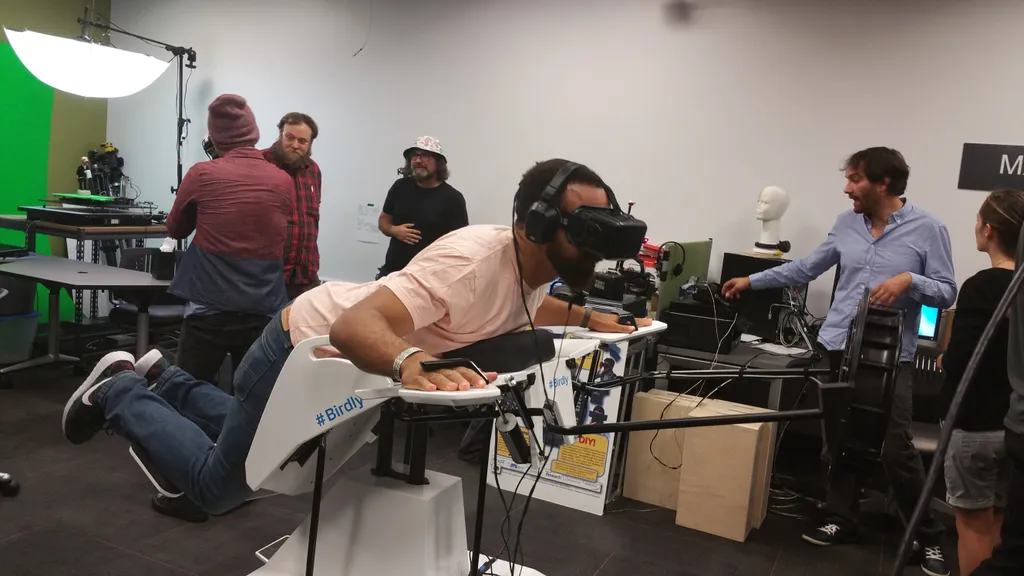Just like any other day, I strap a VR headset to my face – ready to transport myself into a new location. This time, I’m awkwardly lying down on a hinged platform with my arms spread across a white surface as an engineer casually presses buttons nearby. Suddenly, I look down and see a breath-taking city beneath me. Then, out of nowhere, panic sets in for a brief exhilarating moment as my brain begins firing signals that I’m falling from the sky – until I catch a current of wind, allowing me to realize that I can fly.
This particular sense of flight was induced by an installation piece called Birdy, created by Somniacs. The experience allows users to intuitively embody the being of bird, evoking strong feelings of soaring through the sky.
My experience started after walking into a room on the 3rd floor of the School of Cinematic Arts at USC. Inside the research environment remained a bounty of VR-related hardware strewn about the area including a Fakespace Boom display, an LED tracked headset, and the caricature of a funny little man in front of a green screen. In the center of it all was Birdly with several VR influencers hovering around.

After positioning my body onto the crazy contraption, my first reaction was to dive head first into the wave of wind, barreling down at incredible rate of speed like a bird about to catch its prey. Tumbling towards the buildings, I turn fast and head straight into a giant skyscraper. In the back of my head I knew that the structure wasn’t real so my mind automatically assumed that I could fly through it for some odd reason. Boy, was I wrong. I hit the edge of the glass and instant darkness set in producing an error message that I crashed.
Tapping two red buttons with my thumbs reset the experience, giving me an opportunity to test the boundaries yet again. Of course, I careen as fast as I can downward, sweeping in circles around the buildings. Turning my head, I could see the feathered wings of a bird at the projected points were my arms would be; but I didn’t recognize the appendages as a part of me (at first). Rather it was more like riding the giant creature, soaring through the sky, especially while attempting drastic changes in directions. It felt like surfing wind currents on a Manta ray rather than becoming the bird itself.
At least that was until I accelerated at about a 90 degree angle heading towards the street below.
Right at the very last second, I pulled myself up as hard as I could in an effort to stabilize my descent. My arms flap wildly slowing me down enough to catch my breath. Like an expert plane pilot who just avoided a fiery death, I floated swiftly to the concrete floor.
https://vimeo.com/127065582
Birdly’s magic comes from a network of sensors that trigger interactivity with the virtual environment. One of the main hubs is an Arduino shield connected to what looks like a custom circuit board found underneath the center portion of the motion rig. Signals are most likely routed back and forth from there to various sensors, pumps, and/or the computer.
Each piece of the platform connects together with gold hinges that look like they could also be used to swing open a door. Small pneumatic pumps control the pressure of air felt against the flapping motion of people’s arms. An office fan sits in front of the machine blowing wind currents towards the user, making it all feel so real.

Additional hardware remains in the base of the motion rig. As seen in a Tested interview, Birdly comes complete with a variety of smells as well. Although I didn’t notice any sensations of smell during my demo, I can imagine how that would increase the magnitude of presence that accompanies with the experience of flying.
The demo initiates with the sequence of button presses. An engineer hits a few calibration points and then sends the user into play mode from there. Those beautifully lit up buttons are embedded into the frame of a metal case that holds what can be assumed is a powerful research computer. Wires stretch to the Birdly motion rig from there.

The data used to create the 3D models of the cities is from PLW Modelworks. According to a Road to VR review, the team integrated the information into the Unity game engine. However, in the Tested video linked above, Max Rheiner (Founder, Chairman and CTO of Somniacs) mentions that they have experiment with their own game engine as well. Whichever one that was running my demo produced representations of the buildings that were so realistic that it tricked my brain into thinking it was live action video at times.
Reportedly, there are new demo locations too. New York, San Francisco, and a clock-like experience can be fired up at any given time. In the city that I was in, there is a billboard that you can fly through that transports you into the Swiss Alps. Try and find it you can.
So, if you ever find yourself in the room with Birdly, make sure you give it go. It is sure to be an experience you will never forget!
For more information, check the Somniacs website linked above.






























